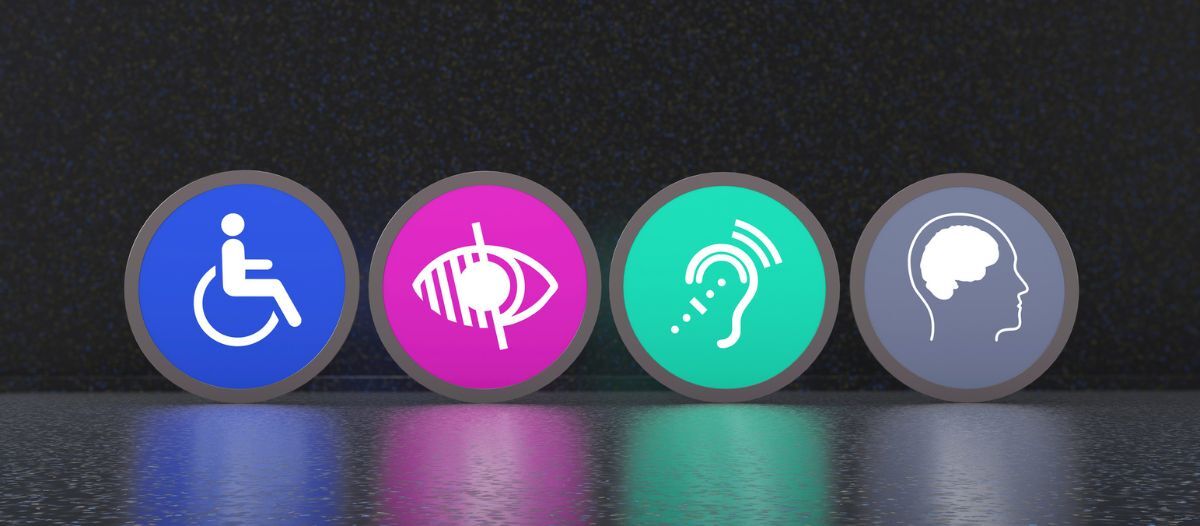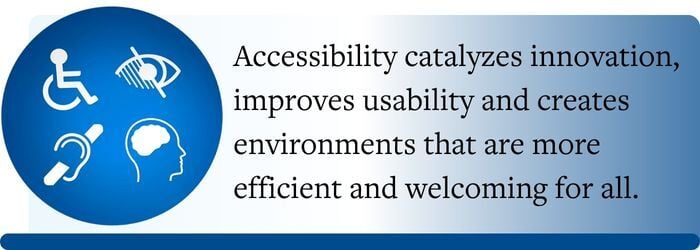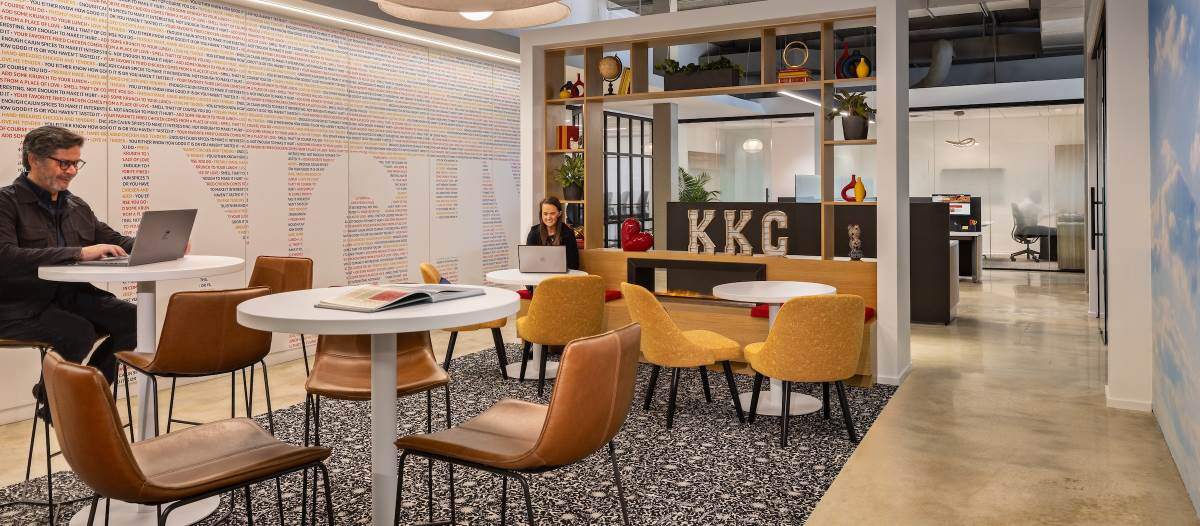If You Can’t Navigate It, You Don’t Belong
Rewriting the architecture of inclusion

Disorientation is a nearly universal human experience. Even the most confident traveler has struggled to locate a gate in a sprawling airport, to find a restroom in a crowded stadium or to retrace steps in a labyrinthine hospital. For most, such challenges are temporary and quickly resolved with the aid of signage, maps or landmarks. For individuals who are blind or visually impaired, however, the problem is not episodic but systemic. When basic navigation tools rely exclusively on visual cues, the frustration never ends. The result is not simply inconvenience but structural exclusion. It becomes a barrier to participation embedded directly into the built environment.
The magnitude of this exclusion is often underestimated. Globally, more than 43 million people live with blindness, while another 295 million experience moderate to severe vision loss. In the United States alone, over 12 million adults aged 40 or older have some form of visual impairment. These numbers represent entire populations the size of major metropolitan areas. They are not a marginal group. And the issue is not limited to those currently identified as blind or visually impaired. As societies age, most individuals will eventually experience reduced mobility, diminished vision, or sensory decline. Designing environments around accessibility is not simply designing for a minority but designing for the human condition across the lifespan.
Ironically, the very environments in which clarity is most essential are often the least navigable. Hospitals, transit hubs, stadiums and shopping centers - spaces intended to deliver service, care and connection - routinely present insurmountable barriers. These are precisely the environments where orientation should be intuitive and independent. Yet for those unable to rely on sight, they often produce disorientation, dependency and fear. The underlying reason is straightforward: most spaces have not been designed with blind or visually impaired individuals in mind. Orientation has rarely been embedded into the DNA of architecture or infrastructure. Instead, visual signage has been assumed to be a universal language. The assumption that everyone can see, interpret and act on visual cues, constitutes one of the most enduring forms of invisible discrimination.
Defining moments
In 2025 and 2026, the world faces an extraordinary opportunity. Cities are entering a period of reinvention. Major global events such as the 2026 FIFA World Cup and the 2028 Olympics are driving billions of dollars toward infrastructure renewal. Airports are being rebuilt from the ground up. Public transit systems are being digitized. Stadiums and civic buildings are being retrofitted with advanced technologies. These projects represent not only physical transformation but also philosophical choice. The design decisions being made now will define how urban life is experienced for decades, if not for generations. The question is whether this investment will yield spaces that are not only technologically advanced but also fundamentally human: spaces where accessibility is not decorative but structural.
Unfortunately, the prevailing approach to accessibility remains narrow. Too often, it is framed as a compliance matter, a checklist to be satisfied rather than a design philosophy to be embraced. The pattern is familiar: install a ramp, affix Braille to a sign, declare a building “accessible.” Yet this approach confuses the appearance of inclusion with its substance. A ramp provides no independence if its location cannot be discovered. An elevator fails its purpose if hidden behind an unmarked door. A touchscreen kiosk requiring visual input offers nothing to someone unable to read its display. Compliance, in such cases, creates only the illusion of accessibility.
The digital revolution, far from correcting these oversights, has often replicated them. Navigation apps frequently depend on constant visual reference. Voice assistants rarely describe physical surroundings with sufficient precision. Security systems demand visual confirmation. “Smart” infrastructure, when designed without inclusive principles, risks encoding exclusion into the next generation of civic life. The mistakes of the physical past are thus being repeated in digital form, entrenching barriers rather than dismantling them.

Breaking the ceiling set by baselines
This challenge must also be understood in historical context. For example, in the U.S., the Americans with Disabilities Act, passed in 1990, established a new baseline for access but was never intended to be the ceiling of ambition. Universal design frameworks that emerged in the late 20th century were built on a radical proposition: when environments are created for those at the margins, the benefits expand outward to all. The curb cut, originally designed for wheelchair users, became indispensable for parents with strollers and travelers with rolling luggage. The same is true for captioning, first adopted for the deaf community and now essential for commuters watching videos on muted phones. Orientation technology is the next frontier in this lineage. It is the 21st century’s version of the curb cut, an innovation born from necessity that carries profound universal utility.
An alternative approach begins by redefining accessibility. It should not be treated as a legal minimum but as a central design philosophy. Accessibility is not an obligation or a burden; it is an opportunity to create environments that foster dignity, independence, and participation. At its core, true accessibility is about orientation: the ability to know where one is, how to move, and how to arrive at a destination without dependence on others. Orientation is the foundation of autonomy.
Consider a hospital. For a blind visitor, every hallway becomes a question, every intersection a negotiation, every floor a maze. Simple tasks such as finding a loved one’s room or locating the cafeteria demand assistance from strangers. The cost is not merely time or convenience but dignity. A person compelled to ask for help at every step quickly concludes that the environment was not designed with them in mind. The same dynamic applies to universities, office buildings, shopping centers, and transportation hubs. All share a reliance on visual information as the sole orienting layer. Remove that layer, and they collapse into disorientation. The absence of a backup plan is not a technological limitation but an imaginative failure.
Putting tech to work
When individuals with disabilities are engaged not as afterthoughts but as collaborators in design, the outcomes change dramatically. Solutions become smarter, more resilient and often beneficial far beyond the original use case. For example, orientation technologies initially developed for blind users - mobile apps now deliver audio prompts and sensors providing real-time location information - soon proved valuable for seniors, tourists navigating unfamiliar languages, parents with strollers, and individuals recovering from temporary injuries. The lesson is clear: orientation is not a niche requirement but a universal need. Clarity in navigation benefits everyone. Inclusive design generates spillover effects that enrich the entire public.
Given its universal importance, navigability should be recognized as a form of public infrastructure, akin to literacy or internet access. It should be regarded as a baseline for participation in civic life rather than a discretionary feature. Without orientation, participation is diminished, confidence is eroded and the message is unambiguous: this space was not created with everyone in mind. The urgency of this recognition cannot be overstated. The airports, stadiums and civic complexes designed today will shape experiences for decades. If accessibility is not prioritized now, exclusion will be cemented for generations. The blueprint will not reveal the absence; the budget will not highlight it. Yet every visitor who cannot orient themselves will feel it immediately.
Everyone is welcome
Importantly, this transformation is not prohibitively expensive. The integration of orientation tools like talking signs, audio format signage, context-aware prompts and wayfinding systems, represents a modest fraction of existing construction budgets. The barrier is cultural, not financial. Accessibility has long been perceived as a constraint, an obstacle to aesthetics or efficiency. The reality is the opposite: accessibility catalyzes innovation, improves usability and creates environments that are more efficient and welcoming for all.
The economic rationale is equally compelling. Inclusive environments not only expand participation but also expand markets. Travelers who can navigate confidently are more likely to return. Patients who can move independently through healthcare facilities report greater satisfaction and lower stress. Shoppers who can orient themselves within stores spend more time and money. For institutions, embedding accessibility is not charity; it is strategy. It builds reputational value, strengthens customer loyalty and reduces the hidden costs of inefficiency and staff intervention. Orientation is therefore not only a moral imperative but also a competitive advantage.
Spreading the culture of inclusion
When orientation is embedded, the benefits are widespread. Public spaces become less intimidating, staff interactions more efficient, and stress levels lower for all visitors. Employees spend less time providing directions. Visitors feel more confident and independent. Fear is replaced with assurance. Inclusion ceases to be aspirational and becomes architectural fact. The goal is not novelty gadgets or superficial gestures but a cultural shift: from viewing accessibility as a regulatory hurdle to embracing it as respect in built form. The test of success is simple: can every person enter, move and participate without needing to ask for help? If the answer is no, the space remains incomplete.
Imagine a world where orientation is seamless and invisible, embedded into the architecture itself. Spaces would be navigable not because accommodations were bolted on afterward, but because clarity was present from the first blueprint. In such a world, belonging would not be conditional. Participation would not require negotiation. Individuals could arrive, navigate, and contribute fully without requesting assistance. Everyone experiences moments of being lost. The difference is that some are given tools - signs, maps, landmarks- while others are not. Those who feel at home in public environments are those whose needs were considered from the outset. Others are forced to adapt. Inclusive design asks what it would mean to reverse this burden, to build clarity into the very foundations of space, to make orientation as natural and expected as signage is today.
Until that vision becomes reality, no society can claim to have created environments of true belonging. Because until everyone can navigate the world, no one truly belongs in it.

Idan Meir is the Co-Founder and CEO of RightHear, a pioneering technology company transforming public spaces into more inclusive environments for people who are blind or visually impaired. With a background in education, storytelling and entrepreneurship, Meir is a globally recognized voice in the accessibility and assistive technology space. Through RightHear, he has spearheaded the deployment of indoor orientation solutions in airports, universities, malls, hospitals and smart cities around the world, making them more navigable for individuals with vision impairments. A sought-after speaker and thought leader, Meir advocates for a world where physical accessibility is seen not as a privilege but as a human right. He is passionate about building technology that bridges barriers and unlocks independence, one space at a time.
Read more on Occupancy & Human Factors or related topics Accessibility , Environmental, Social and Governance (ESG) and Planning and Design
Explore All FMJ Topics









